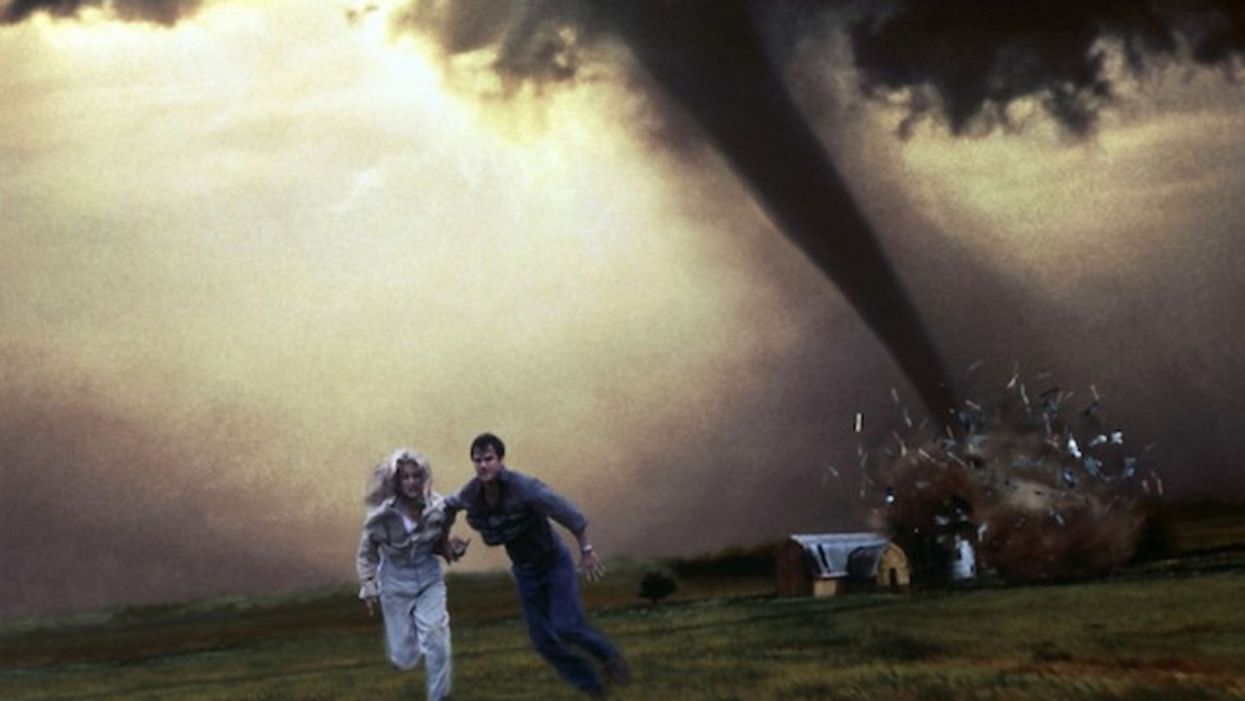How Did 'Twister' Change Movie Marketing Forever?
Movie marketing took a dramatic turn when Twister was released. Find out how.

Before Twister came out, there was some debate on whether or not a Hollywood film could open and be successful in the month of May. It's hard to think back to the pre-pandemic time, but Hollywood's summer now starts as early as March.
That's all thanks to Amblin pushing Twister in May to unprecedented success, creating the early summer box office and delivering unparalleled success at the time.
The movie was directed by Jan de Bont and expected to be buried at the box office.
But they were all wrong.
People really cared about tornados and this movie caught part of the cultural zeitgeist, keying in on what the public wanted.
After the trailer dropped, people wanted to know about this story and about twisters in general.
Stan Landsman, account representative for Radio and T.V. told the Los Angeles Times, “There have been other films that are big, but this is huge. The amount of coverage is phenomenal. It’s getting a lot of attention, probably because it’s relevant to people. The tornadoes are current and they’re happening now and there are people who actually chase these things for the government, so it’s not just some fluff movie.”
Twister was debuting around the same time a Brian De Palma's Mission: Impossible and didn't have the name recognition or star power.
But what it did have going for it was an amazing marketing campaign the likes of which Hollywood had never seen.
Twister was one of the few films from the 90s to gross over $500 million domestic based on an original spec.
So, what did the movie have going for it?
The buzz of how hard it was to make it.
They pushed the VFX big time. Twister was a movie you had to see on the big screen. You could see and feel the power. But it also had romance. The interplay between Hunt and Paxton helped draw crowds as well.
But they were not the stars. The stars were the tornados.
People were shocked by how real everything looked.
As the Los Angeles Times reported in 1996, "Ad industry experts say the studio has received millions of dollars in free publicity beyond that normally generated by a movie of this type." Jack Trout, the head of a marketing strategy firm in Greenwich, CT told the Times, "I’ve got to think that the exposure is worth double their advertising budget. Let’s say they spent $5 million on advertising. They’ll get another $5 million in free space easy. Just Time magazine and the TV shows connect in the mind. That is the beauty of it."
Between floating cows and an appearing and disappearing funnel cloud, movie marketing became more than just commercials.
Years after departments would try to research and cross-promote their films with real news stories. Trailers would be made to laud the VFX and tech used to accomplish filmmaker dreams, and the summer movie season became the most viable market known to cinema.
This is all standard stuff, but Twister helped make it possible.
Now if only studios trusted big-budget specs not based on IP today...
Up next: How Tech used for The Mandalorian is Changing Hollywood
Hollywood is looking for any kind of tech to start shooting ASAP, but maybe it has already been invented.
Keep reading.











